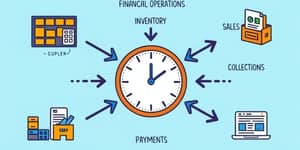
The balance sheet speaks volumes beyond numbers. In today’s market, understanding the nuances of goodwill and other intangible assets allows stakeholders to see the true value hidden within financial reports. A well-crafted analysis not only highlights acquisition premiums but also reveals how brands, relationships, and intellectual property drive long-term success.
Whether you’re an investor seeking deeper insights or a manager refining acquisition strategy, grasping these concepts can transform decision-making and unlock new growth opportunities.
Goodwill emerges when Company A acquires Company B at a price exceeding the fair market value of net identifiable assets. It represents the premium paid for intangible assets, such as brand reputation, customer loyalty, and proprietary processes. Recognized only in acquisition scenarios, goodwill can never arise through organic growth—it is inherently tied to the purchase price.
By recording goodwill, organizations acknowledge that some assets—though invisible on the balance sheet—hold immense value. This recognition bridges the gap between book value and true enterprise worth.
To calculate goodwill, apply the simple formula:
Goodwill = Total Purchase Price - Fair Market Value of Net Identifiable Assets
In this example, the acquirer paid a 25% premium over the underlying net assets, reflecting the target’s strong market position and anticipated synergies.
Beyond goodwill, businesses often possess identifiable intangible assets such as patents, trademarks, copyrights, customer lists, and proprietary software. These items can be separated from the business, sold, or licensed independently.
Accountants assign finite useful lives to these assets, amortizing their cost over expected benefit periods. Proper identification ensures that all resources contributing to future earnings are recognized and managed effectively.
Although goodwill and identifiable intangible assets both reside under intangible assets, they differ fundamentally. Goodwill is not separable or individually transferable and arises solely from acquisitions, whereas other intangibles are identifiable, can be sold, and have finite lives. On the balance sheet, goodwill is displayed separately, alerting users to its unique nature and imposing specific impairment requirements.
The subjective nature of goodwill valuation poses challenges. Estimating future cash flows, assigning discount rates, and isolating synergies often relies on management assumptions. These factors can lead to valuation discrepancies and potential restatements if projections fail or market conditions shift. Enhanced disclosure and transparent methodologies can mitigate investor skepticism.
On the balance sheet, goodwill sits under intangible assets, boosting total assets without a matching liability. When impairment occurs, companies record a non-cash expense, reducing asset value and net income. This dynamic influences debt covenants, return-on-assets metrics, and investor perceptions. Clear communication about assumptions and testing outcomes is essential for maintaining stakeholder trust.
One of the most cited illustrations is Warren Buffett’s acquisition of See’s Candies. The premium paid reflected intangible factors—brand loyalty, regional market dominance, and management expertise—rather than physical assets. See’s steady cash flows have justified the goodwill for decades, demonstrating how intangible build-up fuels sustainable returns.
Assessing goodwill and intangible build-up transcends simple arithmetic. It requires a blend of financial acumen, strategic foresight, and transparent reporting. By understanding the nuanced interplay between tangible and intangible value drivers, investors and managers can make more informed decisions, unlocking hidden potential within corporate balance sheets.
Embracing robust valuation techniques, enhancing disclosures, and conducting regular impairment evaluations will cultivate a culture of accountability and insight. Ultimately, a well-navigated intangible landscape empowers organizations to harness their full asset spectrum and thrive in an increasingly knowledge-driven economy.
References













